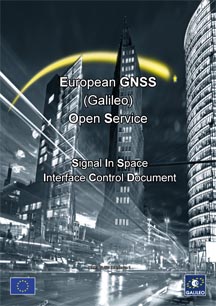The European GNSS Agency (GSA) released a new Galileo Open Service Signal in Space Interface Control Document (OS SIS ICD), the second issue of this document geared towards GNSS receiver manufacturers. Although the modified signals are not yet broadcast by Galileo satellites, the ICD will allow GNSS receiver manufacturers to prepare for the improved signals, set for debut in 2023.
Among other updates, three new features are introduced to the I/NAV message transmitted on the Galileo E1-B signal component: Reduced Clock and Ephemeris Data (RedCED); Reed-Solomon Outer Forward Error Correction Data (FEC2); and Secondary Synchronization Pattern (SSP).
The OS SIS ICD v.2.0 is available for download in the Programme Reference Documents section of the European GNSS Service Centre (GSC) web portal.

The new Open Service features will provide users with a more robust and faster retrieval of the clock and ephemeris data, particularly for users in challenging environments, while at the same time allowing for a faster reconstruction of the Galileo System Time (GST). This will produce a faster time-to-first-fix for users whose receivers are able to exploit the new solutions, according to the GSA.
The new solutions are fully backward compatible, as they take advantage of parts of the I/NAV message previously marked as spare or reserved. This means that there will be no impact on legacy users and receivers that do not process these spare/reserved fields.
The Galileo Programme will support GNSS receiver manufacturers with the implementation of the new I/NAV capabilities by means of dedicated testing campaigns to be carried out in 2021-2022. The Galileo system is set to begin transmitting the new I/NAV capabilities by 2023.






